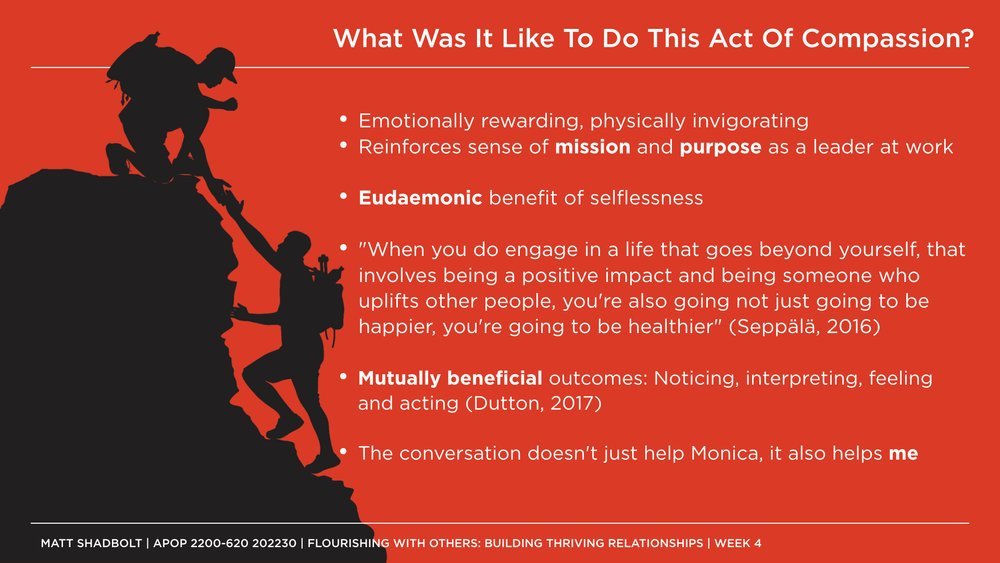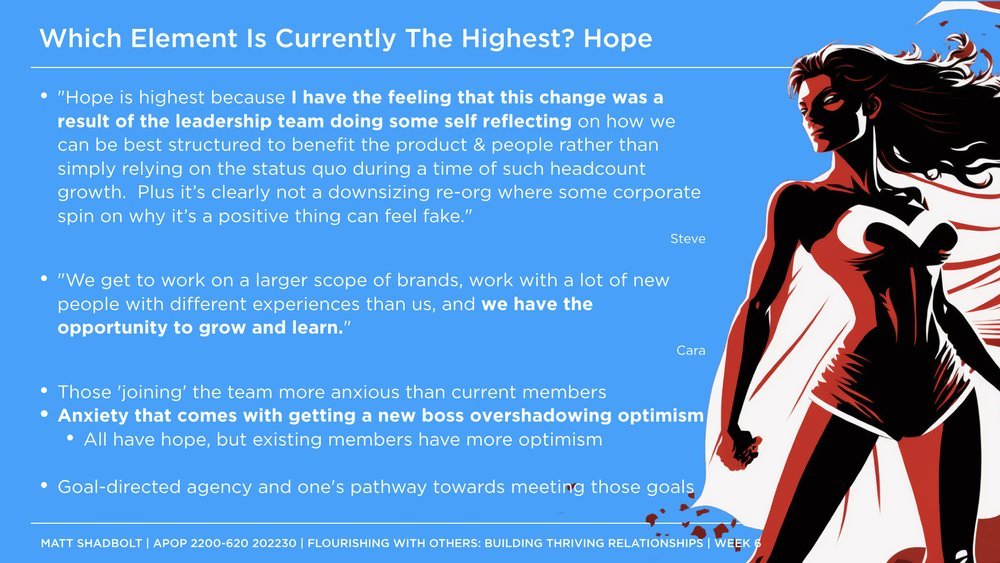
APOP2200
Flourishing With Others
Anything but Blue: Dan Buettner’s Zones of Happiness
Rating: ★★★★
‘I don’t believe that asking you to change your behavior does you much of a service: Most people forget, run out of discipline, or get bored after just a few months.’ (Buettner, 2017)
We all seek the longer, better life. Through diet and exercise, purpose, our work lives, spirituality, or by surrounding ourselves with as much good in the world as we can find. We pursue the rich life well lived, but is longevity a consequence of environment or lifestyle? If we were able to find the optimal conditions for longevity, would we all live longer? What are the differences between making changes in one’s life as opposed to changing where one lives?
These questions are at the heart of National Geographic journalist Dan Buettner’s studies into the regions of the world where people are happiest and live longest. For two decades Buettner has studied some of the world’s most extraordinary communities and identified the distinct regions where we can draw common denominators, and ultimately reverse engineer longevity. These are the blue zones of happiness. Blue because of their identification on the researchers’ maps, but anything but blue when it comes to happiness (Buettner, 2017).
Buettner’s book ‘The Blue Zones of Happiness: Lessons from the world’s happiest people’ (Buettner, 2017) lays out a detailed definition for a happier life, and a brief explanation of the latest scientific understanding of what we know happiness to be. He shares three detailed blue zone case studies, from Costa Rica, Denmark, and Singapore, and draws a unifying throughline in offering practical, tactical experiential learnings for leaders seeking to apply the same lessons to their own environments.
Buettner’s main finding concerns common blue zone denominators, (of which there are other examples in California, Sardinia, and Okinawa), and that within these communities, people moved naturally throughout the day, had a primarily plant-based diet, close familial and social relationships, and a strong sense of purpose in their lives, often associated with faith. They enjoy deliberate downtime and live in environments where there is less risk for activating physical inflammatory response (Buettner, 2017). Buettner quantifies these social constructions into the optimal number of friends (three) and draws upon non-western concepts such as the Japanese notion of ikigai to articulate one’s sense of purpose in life, the reason we get up in the morning. According to Buettner’s work, purpose is worth around seven extra years of life expectancy, social equanimity around five years.
Buettner spends the remainder of the book on practical recommendations for designing the happier life. He does this in a systemic, sequential manner across communities, workplaces, social networks, homes, finances, and our own inner lives. He concludes by distilling his decades of research into his ‘Power 9 of Happiness’, which include compelling lessons for curating our own inner, shaping our surroundings, learning likeability, looking forward and more (Buettner, 2017).
Buettner’s argument maintains that longevity is something which happens to people. That there are positive benefits in environments which make the healthy choice the easy choice. But the problem with pursuing positive psychology interventions is that they only work so long as you sustain them, and that the more effort we put into trying to be happy, the more miserable we become. As he explains, ‘Both Fredrickson and Lyubomirsky have great, evidence-backed ideas, but as they themselves will admit, the impacts of their interventions tend to be modest and short-lived … that’s a fatal drawback, since changes that require personal willpower almost always fail in the long run.’ (Buettner, 2017). The contrast Buettner draws is that positive intervention at the individual level is not as material as intervention at the communal level and lightly leans upon the interconnected and consequential systems theory we find in the work of Donella Meadows (Meadows, 2016) to make the case for the environmental benefits behind living a longer, happier life.
Much of the science of human flourishing focuses on individual agency and our capacity to build the necessary psychological resources to encourage richer lives. Supporting Kern’s discussion concerning positive psychology being too focused on the individual (McQuaid, 2017), Buettner motivates an argument that individual agency only goes so far, and that its results are ultimately unsustainable. But through reducing the very need for individual agency, by living in communities which cause us to move naturally instead of exercise, to eat vegetables instead of consciously diet, or to have meaningful intimate social relationships which require minimal effort, we actively place ourselves within situations where the conditions are optimized for longevity. In the extreme, individualism in the form of loneliness and isolation is argued to be so toxic as to reduce life expectancy itself.
Contrast an intervention which encourages us to move more frequently in nature to improve life satisfaction. Buettner argues that we may find short-term life satisfaction benefits from doing this, but the more material thing to do is live in a place where this isn’t a conscious, deliberate choice. Where it’s not even an intervention in the first place. Buettner’s findings are compelling, but I don’t think individual intervention and blue zone optimization are mutually exclusive. Both have clearly measurable positive outcomes, and both provide evidence-based practical advice for improving happiness. Buettner argues that blue zone communities live longer and are happier, but there’s a third argument that those communities are still composed of individuals making choices about their own lifestyles. Those choices may be easier to make, but there is still a critical degree of individual agency and intervention at work.
In conclusion, I’d recommend Buettner’s ‘Blue Zones of Happiness’ for providing a fascinating inventory of counter-insights to traditional positive psychology, and it will be particularly interesting to those seeking to make longer-term communal changes. But it is best read as additive perspective and recommendation, rather than contrary or exclusionary. Buettner’s practical, tactical advice weaves a compelling case for purpose, diet, relationships, and exercise, and is effective at arguing for longevity and happiness driven by the easier choices in life. But he stops short of an additive case for both individual agency and communal optimization, which might be the very path towards creating more blue zones in the world.
Our Post-Pandemic Return to Better
The organizational opportunity in COVID-19’s unexpected systemic change
‘Positive emotion is at the heart of the interaction’ (Algoe, 2019)
Modern life is shaped and defined by our existence within inter-related systems. But within those systems come high degrees of functional, durable expectation. We turn the faucet and expect the water to run. We assume our mail will be delivered every day. And when we plug our devices into the outlet, we expect the electrical current to flow. These ecosystems of infrastructure and delivery motivate a habitual confidence which facilitates everyday functioning. Reliance upon such systems move us all forward. But what happens when the durability of our systems changes due to forces beyond our control? How might the durability of our faith in systems impact our well-being individually and collectively? And what can we do about it?
As we move from a pandemic to an endemic existence with COVID-19, our relationship with work, and the systems involved in where, how, and with whom that work takes place, have been irrevocably changed. There is a strong desire for many of us to return to how things were. But as we strive toward a culture of returning to the office, it is anything but a return to normal when so many different elements of remote working culture have been normalized. For many the pandemic has motivated declines in social, financial and well-being, and where the traditionally positively protective, insulating psychological factors as extraversion, grit, daily physical activity, and one’s quality of relationships have had to work harder than ever (Okabe-Miyamoto & Lyubomirsky, 2021).
The pandemic forced an unforeseen systemic adjustment in the relationship between the home and the office, changing the nature of inter-connectedness between people and work, and intervening upon a previously durable system with neither our consent nor our control. This disruption has become permanent, and the trajectory of what constitutes a best practice and acknowledgment that there is no single solution to address the resultant problems is very real (Kern et al., 2020). But in leaning upon systems informed positive psychology and promoting behaviors which foster greater psychological safety and capital within teams, we can not only celebrate our emergence and resilience in overcoming a global pandemic, but flourish within organizations to become even stronger than before. By acknowledging and illuminating the complexities and inter-relatedness, the ‘inter-being’ (Hanh, 1975, in Kern et al., 2020) which exists inside of our organizational systems, we can ‘empower individuals towards collective action, rather than helpless avoidance’ (Kern et al., 2020). And in doing so, build the necessary resources and capital to foster a culture of returning to a culture changed, but distinctly, deliberately, positively deviant (Cameron, 2012).
Recognizing and normalizing this change in our previously long-adopted systems, acknowledges that such relational systems have a purpose, elements including people, routines, practices, and resources, as well as interaction patterns which regulate day-to-day life and shape outcomes (Antonovsky & Sourani, 1988; Whitchurch & Constantine, 1993 in Waters, 2020). And in doing so we can draw out specific tactics of positive interpersonal process to promote increases in psychological safety and build psychological capital. Tactical approaches of embracing shared laughter, celebrating the joy of good news, and fostering opportunity for gratitude as means for strengthening relationships within high-quality co-workers (Algoe, 2019), but also approaching contentious situations as collaborators, not adversaries, and replacing blame with curiosity (Delizonna, 2017) can counter previous declines in well-being in the context of unexpected shifts in what we’ve assumed to be durable systems. As Algoe accurately describes, ‘A positive interpersonal process is a social dynamic in which one person’s thoughts, feelings, and behavior change another’s, fueled by positive emotion’ (Algoe, 2019). And if we embrace the opportunity of these approaches, we don’t just return to normal, we elevate to better.
But teams can’t do this on their own, and the role of positive leadership is paramount. Being able to identify what elevates individuals and organization, recognizing what is life-giving, what’s experienced as good, and shining a light on the inspiring and extraordinary in others can all promote positively deviant outcomes such as ‘thriving at work, interpersonal flourishing, virtuous behaviors, positive emotions, and energizing networks’ (Cameron, 2012). By drawing upon and motivating elements of hope, efficacy, resilience, and optimism (Youssef & Luthans, 2013), and elevating the inter-dependence of each, leaders looking to foster positive outcomes for a return to office can create pathways for their organizations which promote positively-oriented motivational states, the necessary cognitive resources and capacity to bounce back from the adversity of a pandemic, and foster a more generalized positive set of expectancy (Youssef & Luthans, 2013).
We can also lean on psychological interventions for teams focused on themes of strong ancestry from family systems theory to build higher-quality connections between and across teams to foster positively deviant narratives through the sharing of stories. Coming together to share stories of strength and resilience in their work, mapping such strengths over time, spotting character strengths in others, and celebrating the narrative they are writing together (Waters, 2020) broadens and builds positive emotional outcomes based upon two different timelines. There’s positive effect in the immediate, and positive effect over time (Fredrickson, 2001, in Waters, 2020). If we’re looking to rebuild the durability in our relational systems of work, developing methods of cumulative intrapersonal and interpersonal resources might prove highly effective over the long-term for organizations.
In conclusion, there is an enormous positively deviant opportunity for organizations to not just return to normal, but to return to better in their current plans to bring their employees back to the office. And by drawing upon the principles, methods, and tactics of positive organizational systems theory, as well as insight from family systems theory and the building of psychological safety and capital within and across teams over time, companies can seize the opportunity to emerge into our new endemic culture in ways that don’t just return us to normal, but foster an elevation to a thriving, flourishing, positively deviant culture of better.






























